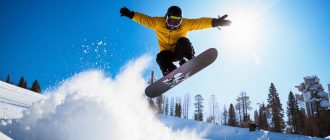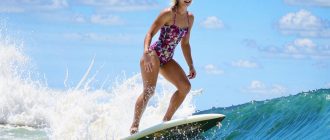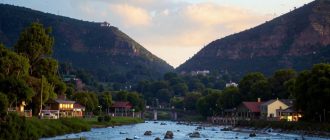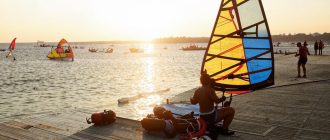Snowboarding and alpine skiing are among the most popular activities during the winter season. Experienced amateurs probably already have all the necessary equipment. But, unfortunately, not everyone takes clothing for skiing on the slope as seriously as necessary. Sometimes there are still people who come to ski in jeans or a coat. Not only everyday clothes can simply quickly deteriorate from such activities, it is also unsafe to wear them. The best option would be to choose the right suit for skiing on the slope, and now we will tell you how to do it.
We will not delve into terminology and brands, but will give recommendations, with which you will be able to choose the right clothes.
What you should be wearing while skiing

snowboard instructor
I think many people have already heard about the layering of clothing in the mountains. There should be four layers in total. Now let’s break them all down in more detail.
The first layer is thermal underwear
During skiing we sweat, our body tries to cool itself in this way. If you put on an ordinary cotton T-shirt instead of thermal underwear, it will quickly get wet and take a long time to dry. Being in a wet T-shirt in winter is not only unpleasant, but you risk catching a cold quickly. That is why it is very important to choose high-quality thermal underwear.
Thermal underwear is worn on the naked body, and its main task is to wick away moisture. It is important that it fits snugly, not hanging on you.
The second layer is an intermediate layer
A fleece or softshell sweatshirt or sweatshirt is worn over the thermal underwear. The second layer absorbs moisture and dries quickly. Unlike a heavy and bulky knitted sweatshirt, on which snow will stick, a weightless fleece sweatshirt perfectly fulfills its function – it keeps you warm and allows you to stay dry while skiing.
The third layer is a membrane
Membrane fabric is used in the upper layer clothing (jacket, pants), protecting the lower layers of clothing from getting wet. The structure of the membrane fabric allows your skin to breathe and allows sweat to escape. The higher the specifications of the membrane fabric, the more durable and lighter in weight it is.
There are many variations of membrane clothing. And, of course, its price will depend on the number of layers, brand and other characteristics. Perhaps the most famous membrane is gore-tex, however, the price for it is very high.
The fourth layer is protection
Whether you’re a snowboarder or a skier, whether you’re a confident skier or just learning a new sport, make sure you wear a full set of protection when skiing in the mountains. You’ll need a helmet, knee pads, shorts and back protection.
Savings considerations
- Thermal underwear. Now on the market is quite a wide choice of underwear, depending on its manufacturer. Prices for sets vary from 500 rubles to 30 thousand rubles and more. You can not hunt for expensive brands, and find good and high-quality underwear without spending a lot of money. For example, a set of thermal underwear Russian brand “Netta” can be purchased up to 5 thousand rubles, and it will serve you for many years.
- Fleece. The price for such clothes also varies greatly. Again, I advise you not to chase brands, because the main function of fleece is not to let you freeze. Quality fleece clothing can cost adequate money – up to 1000 rubles. To lay out a round sum for a brand or not – choose yourself, but I believe that you can save money.
- Membrane. Perhaps the most important item of clothing. You can save money on the previous layers, but if you have outerwear without a membrane, the other layers will not save you from heavy rain or wind, for example. Choose a good membrane. The price, of course, will depend on the brand and manufacturability. The more layers, the more expensive. I’m not saying that you need to choose the most expensive clothes, the index from 10 thousand mm to 15 thousand g.m2 will be enough.
You can learn more about functional materials and technologies that are used in sewing clothes here.
What to pay attention to in the store

Head of snowboarding school X-Camp Russia
In an ideal world you should have two sets of clothes. The first is “light”, for fall and spring weather and the beginning of winter. The second is “heavy”, when the thermometer drops below minus 10 degrees Celsius. Do not think that one jacket and pants will be enough for all occasions.
Jacket
As an outerwear for cold weather, choose a down jacket. Only he really “works” in the frost as it should. All other jackets are still blown through, and there is little use for them. For a lightweight set you can look windproof jackets with a membrane. Outerwear should be moderately wide and necessarily comfortable enough to wear protective equipment under it. At the time of purchase, wave your hands in all directions and make sure that you do not interfere with anything.
At the same time, both down jacket and jacket should be long and fully cover the back and “fifth point”. If you buckle up while sitting in the snow, in the case of snowboarding, this will protect you from getting wet and using extra seat pads. Plus it will reduce your risk of catching a cold.
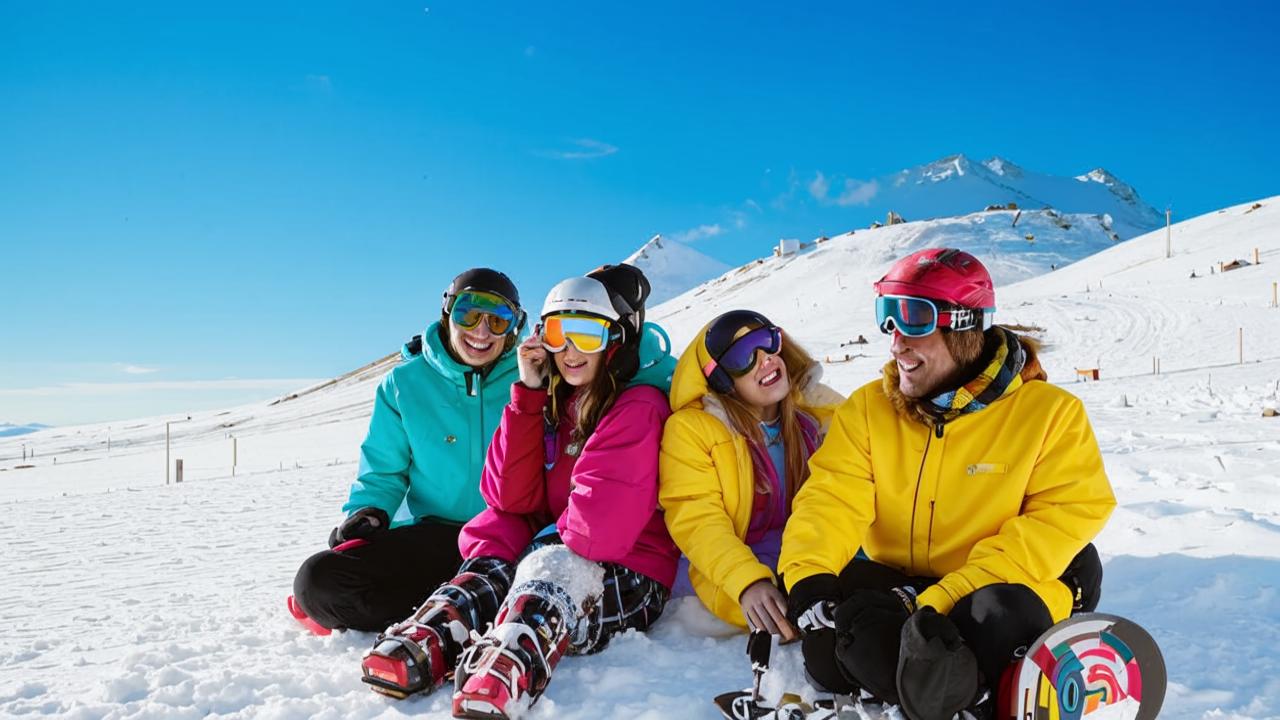
A sweatshirt or sweatshirt made from functional fabrics
Personally, I don’t use a fleece hoodie. I usually wear a long anorak made of softshell fabric. Store clerks call these things “rideable” and they can block 98% of the wind.
Softshell (softshell) – has a specific set of characteristics, of which we can highlight:
- minimal weight;
- windproof properties;
- moisture protection;
- high vapor permeability;
- good enough thermal insulation;
- pleasant contact with the skin.
Pants
Like the jacket, they should be wide and comfortable so that your kneepads and tailbone protection will also fit underneath. When you measure your pants, it is better to do it together with the protection and see if you feel comfortable sitting down, standing up and bending your legs at the knees fully.
Pomembno! Choose riding outerwear in bright colors. The brighter the color, the safer it is for you. On the slope you can easily be seen by other riders and avoid a collision in time. And if, God forbid, you get snowed in, it will be easier for the rescue team to spot you.
Balaclava or helmet
This is a mandatory part of your clothing on the slope. You can use whatever you prefer, the main thing is that it should completely cover your neck. In spring it is acceptable to ride in a regular balaclava, but in frosty weather it is better to choose a version with fleece.
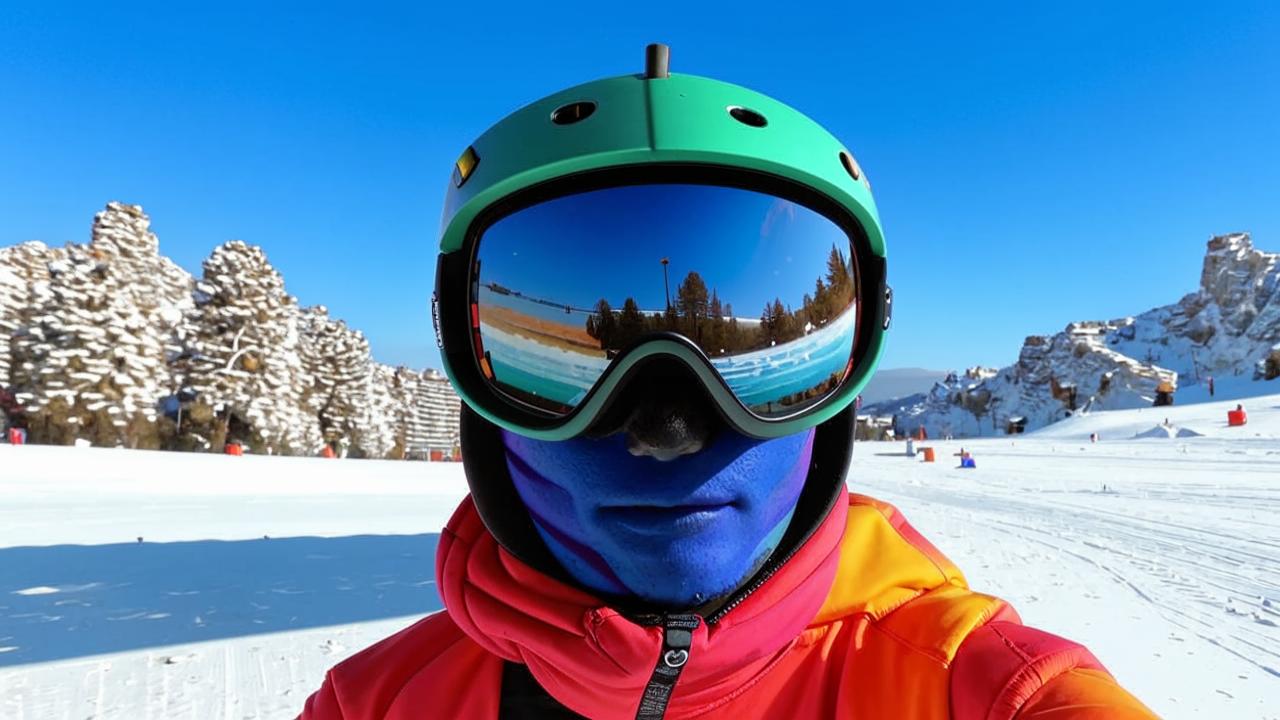
Gloves and mittens
You should have gloves for spring skiing and mittens for winter skiing. In winter – only mittens. They make skiing as comfortable and warm as possible even at temperatures below -15-20°C.
Ski socks
Many people either do not know about their existence, or simply ignore them, and in vain. Wet and frozen feet with blisters are unlikely to add to your pleasure. During a full day of skiing in the boots is formed a lot of moisture, and if you do not think about it in advance, your feet will quickly get wet and freeze. Special ski socks will help to effectively drain moisture, keep you warm, protect your feet from injury and keep your muscles toned.
Requirements for all items of clothing
- Seams must be strong and well stitched.
- Zippers must be taped.
- Pockets are where they should be and have easy access. Think right away about where you will store your phone so it is comfortable to reach and put away.
- The vent is large and easy to unzip. It’s better to cover it up a bit than to open it completely and find it lacking.
Remember. It is very important that nowhere and nothing blows out. Otherwise you will be cold, possibly get sick and all the time you will be distracted by discomfort, not riding.
Catherine: I strongly recommend you to refrain from fox tails, animal costumes and strange hats, if you do not want to catch judgmental looks at yourself. Such accessories have been out of fashion for a long time. Believe me, it’s not cool.
Vladimir: Do not use ordinary scarves while skating. They are inherently useless, they bunch up, move off and flutter. Refrain from anything that can be hung on your helmet. These “exterior elements” can only make your accidental fall worse. Regular sunglasses are not recommended for riding because of the risk of injury (for example, you can severely damage your eyes if you fall on your face). It is better to replace them with a ski mask.
If you still haven’t bought a board, it’s time to think about it. After all, winter is near. Read more about how to choose a snowboard here.


